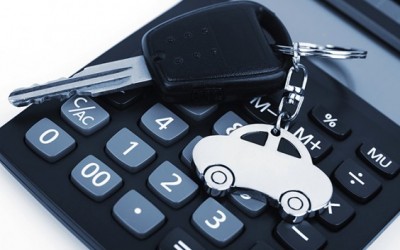Company cars can have three uses – only for performing the activity, only for the personal use of the employees or a mixed one.
The expenses and the VAT related to the vehicles heavier than 3.500 Kg. and equipped with more than 9 seats, including the driver’s seat, are considered to be fully deductible. Deductible are also the expenses and the VAT for any type of vehicle used in one of the following situations:
- Only for emergency services, security services and courier services;
- By sales and purchasing agencies;
- For taxable passenger transport, including taxi services;
- For rendering taxable services, including renting to other persons or for instruction by driving schools;
- As goods, for commercial purpose.
Mixed use
According to legal provisions, expenses related to power-driven vehicles (except for the amortization for which special rules are applied) which are not used only for economic activity, with a maximum permissible laden weight not exceeding 3.500 Kg and maximum 9 seats, including the driver’s seat, are deductible to a limit of 50%.
The 50% deductibility rule applies also, with regard to the right of deduction of input VAT for the above described vehicles. The expenses subject to this limitation include directly the expenses attributable to vehicles, including those related to the leasing contracts, such as: fuel, spare parts, local taxes, compulsory motor insurance, periodic worthiness tests, rent, not deductible expenses related to the WATT resulted from applying the 50% limitation, interests, commissions, less favorable exchange rate differences etc.
Full deductibility
Full deductibility is applied for the above mentioned expenses only in case the vehicles are used only for economic purposes and under their justification based on accounting documents and vehicle logbooks. According to the Fiscal Code, the vehicle logbooks must contain the following information:
- The class of the vehicle used;
- The purpose and place of the travel
- Kilometers covered;
- Own norm of fuel consumption/km. covered.
By exclusion, one can understand that in case of vehicles for which the 50% treatment is applied, no preparation of vehicle logbook is needed.
Benefits in kind
In case the vehicle is used both for economic and personal purposes but is considered fully deductible (because it is used in the above mentioned situations), it is recommended the use of the vehicle logbook as supporting document in order to determine how much is used for economic purpose and how much for personal purpose.
According to the Fiscal Code, the advantages in form of personal use of the vehicles for which the deductibility limitation of 50% was applied are not considered to be wage income. With regard to the vehicles for which full deductibility was given, but which are used also for personal purpose, the part which was used for personal purpose is considered to be a benefit in kind. Thus, in order to calculate the value of the benefit in kind, the following formula will be used:
Benefit in kind = (1.7% of the entry value or the value of the rent divided by the total number of the kilometers covered in a month) and then multiplied by the number of kilometers used for personal purpose.

